What is Ashtanga Vinyasa Yoga? What’s Mysore Style? And More!
Over the last few years, I’ve received all sorts of questions about the type of yoga I practice and teach. Since before my last trip to India, I’ve been teaching Sunday-Friday at Kali Yoga Studio in Columbia Heights in a traditional format called “Mysore Style” Ashtanga Vinyasa Yoga.
We call this program “DC Ashtanga.”
In my experience of both practicing and teaching, I have come across no system of yoga more effective, exacting, or straight-up powerful as Ashtanga Vinyasa Yoga as it’s taught in Mysore.
Right now, we have a $45-two week get-started special that will help new practitioners get their feet off the ground and flying high. Like sugar’s taste, its hard to explain, easy to experience.
(and pretty darn sweet)
Without further ado:
Ashtanga Vinyasa Yoga? What’s that?
Ashtanga Vinyasa Yoga is a physical practice (a moving mediation) designed to still the mind, bring ease to the body, and allow the practitioner greater awareness of their true self.
Ashtanga refers to a method of stilling the chatterings of the mind through an 8-fold path. In fact, this stilling of the mind is the essence of yoga— period.
Vinyasa refers the sequential order of things. Because we’re doing a movement practice, we’re sequencing breath and movement. “Vinyasa” in this context is the specificity of breath and movement.
Yoga, ultimately, is an appreciation of the world around you and your place in it. Seeing life as it actually is versus how we have been conditioned to experience it. The eight fold path is outlined in a book called “The Yoga Sutras” written by the Sage Patanjali.
What Is Mysore?
I guess firstly, the questions could be “where is Mysore?” Mysore is a city in southern India in the state of Karnataka. Two revolutionary yoga teachers, Krishnamacharya and Patthabi Jois, spent many years teaching here.
“Mysore,” for our intents and purposes, refers to the style of teaching perfected in that southern city. Ashtanga yoga has been taught this way in Mysore for nearly 100 years!
What separates “mysore style” ashtanga yoga from a more western style?
Students are instructed individually in a group setting.
Starting with a few sun salutations and a few closing postures, each student gradually learns their practice from their teacher piece-by-piece. Though most start somewhere around three days a week, a student is encouraged to work up to six-days a week of practice in order to best experience ashtanga yoga.
As the student is able to memorize more-and-more of their practice, eventually they will hit a challenging posture that takes a bit more work than the ones before it. This is where the students and the teacher work together to make the impossible possible. This will happen with time, patience, and persistence. And, once it does? The student will be given another posture to work on. In this way, everyone is working on something in the room.
Your practice takes as long as it takes— to get through your full sequence (or however much you have time for that day!). There is no one-size-fits-all model here. This is perhaps best reflected by the “start time”— there isn’t one. Students arrive at their leisure to take practice.
What if I can’t remember the sequence?
That’s why the teacher is there! This is a practice that grows with student, and for many folks, choreography can be quite challenging! Not to worry, its why the mysore room is better than a DVD. A DVD won’t correct you.
Because we are all growing a practice from the ground up—every day working— ashtanga vinyasa yoga, as taught in the mysore setting, is truly the only all-levels class out there. Appropriate for everyone, the practice is taught gradually, giving you time to memorize and explore.
Whats with all these strange words? I feel like I need a translator.
The language that we use for a lot of the stuff in the mysore is Sanskrit. Pattahbi Jois was a great sanskrit scholar, as was Krishnamacharya, and a lot of the work we do comes from some ooooooold books, written in the sanskrit language. So as not to lose the essence of the words, we keep them in their original sanskrit form. “Side angle pose” doesn’t make anymore sense out of context than “parsvakonasana,” anyway.
Also: this is a practice done all across the world. Using a little bit of sanskrit means that you can comfortably take practice anywhere in the world, and you’ll know what the heck is going on! Don’t let the words overwhelm you. You’ll pick them up organically through repetition!
So, do you play music? Do you talk? Whats the deal?
You’ll likely first notice how quiet the room is when you walk in— except for some breathing sounds. You can’t still the mind while running the mouth, after all. Same-same with music, it kinda gets in the way of the whole “being with yourself” thing.
The teacher in the room will likely keep their chattering to a minimum so as to help keep the students’ mental chatterings pretty low, too. After all, thats why we’re here.
Whats up with the breathing?
We use a breath that has a sound to it. It helps to hone the ears to an aural focal point, it helps warms up the body (like fogging a mirror), and it helps calm down the nervous system (so you don’t freak out when learning a new pose!).
So, if talking is kept to a minimum, how do I *learn* a new pose?
By doing the pose. A little verbal goes a long way, though some students might need more than others. Some might *want* it more than others, but thats another story entirely. The teacher in the room will likely correct form through a mix of verbal and physical cueing. The physical cueing should help keep you practicing with a certain fluidity. Too many words can get in the way!


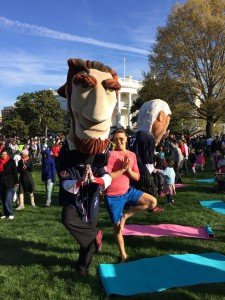
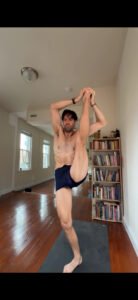
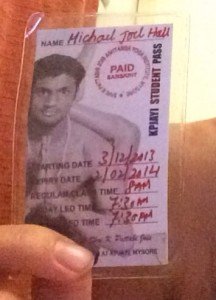
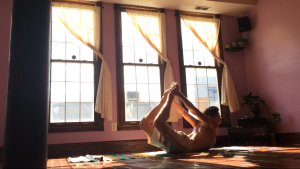
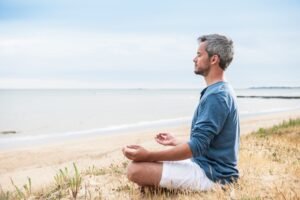
[…] What is Ashtanga Vinyasa Yoga? What’s Mysore Style? And More! […]
awesome descriptions! simple, and straight to the point. <3 <3 <3 Ashtanga Yoga